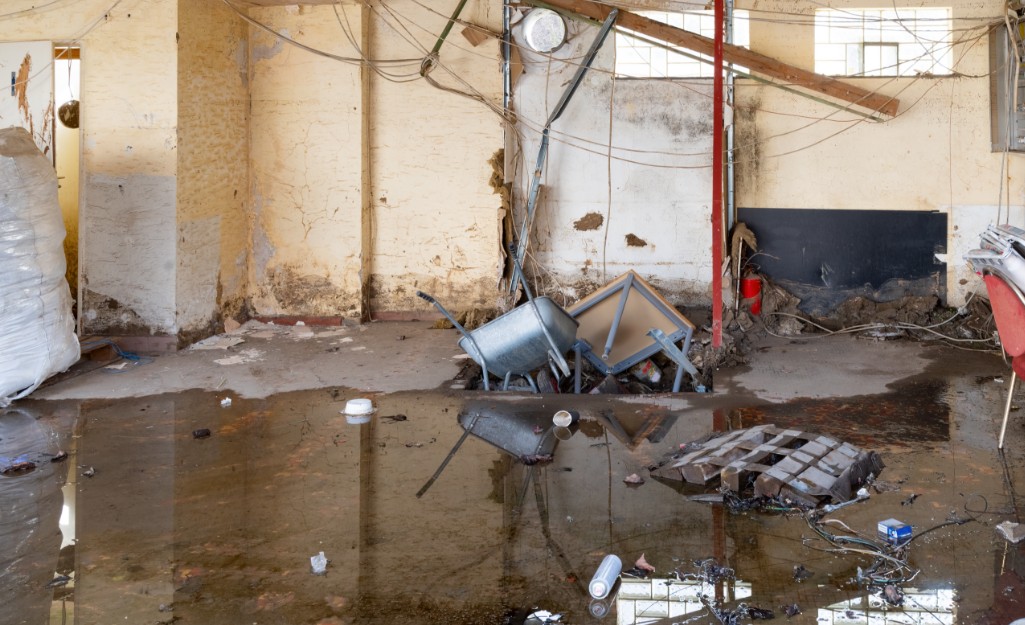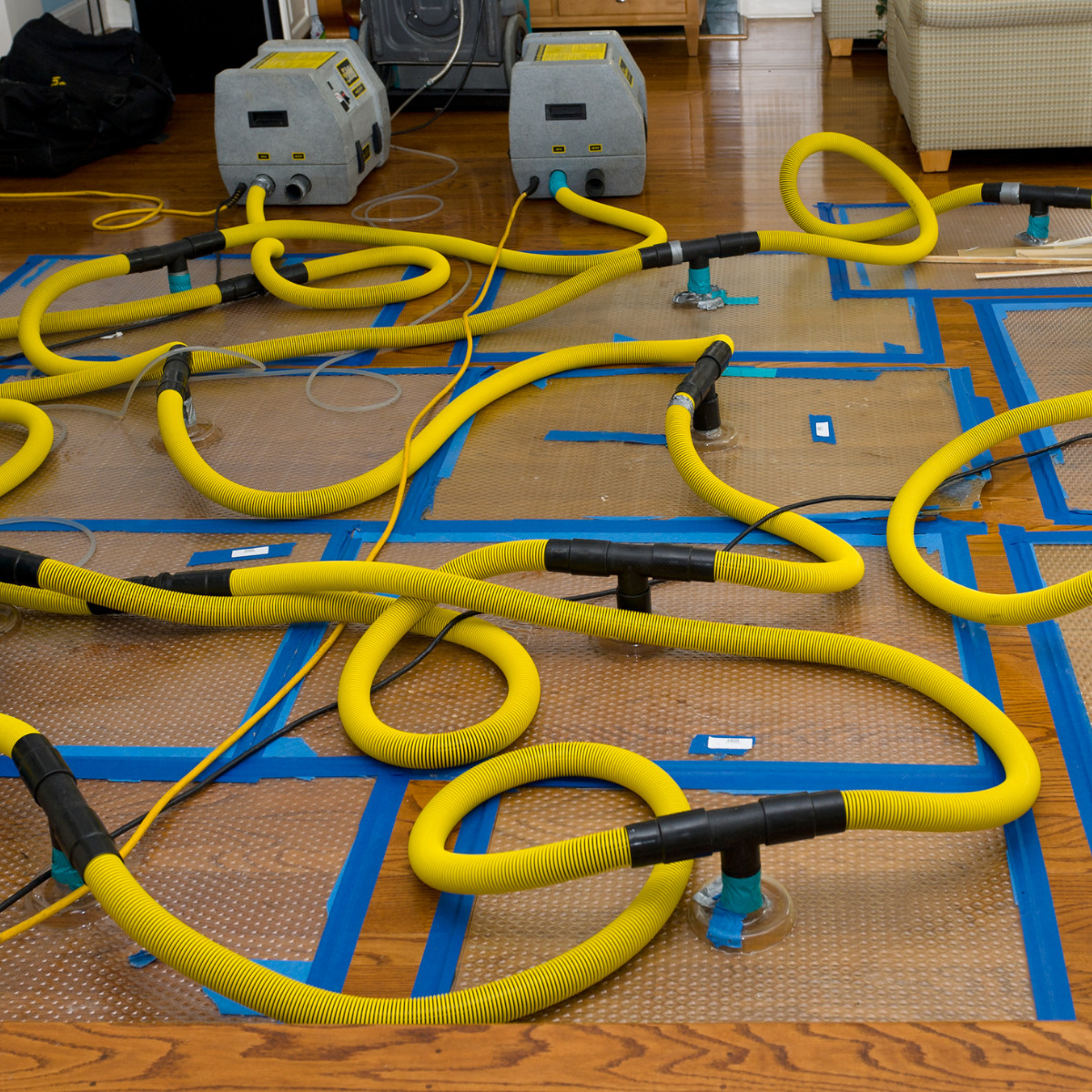The Homeowner’s Ultimate Guide to Water Damage Cleanup After a Flood or Leak
The Homeowner’s Ultimate Guide to Water Damage Cleanup After a Flood or Leak
Blog Article
Vital Actions to Follow for Effective Water Damages Restoration in your house
When encountered with water damages in your home, knowing the crucial actions for reliable restoration can make all the difference. You require to analyze the damages and warranty safety prior to taking on the problem. Quiting the source of water is essential, but it's just the beginning. Once you have actually taken care of that, there's a series of activities you must take to protect your residential property from more problems. Let's discover what you ought to do next.
Analyze the Damages
The very first step is to assess the damage thoroughly when you find water damage in your home. Begin by determining the source of the water invasion. Check for leakages, ruptured pipelines, or other concerns causing the trouble. Next, check out the impacted areas for visible indicators of damage, consisting of staining, mold, or bending development. Do not neglect to look in surprise areas like behind wall surfaces or under flooring, as water can permeate into these locations unnoticed.Document the damages by taking clear photos and notes. When talking about the circumstance with your insurance coverage supplier or restoration experts, this will assist you. Pay attention to the kind of products impacted, as different materials call for different remediation approaches. Lastly, evaluate the level of the damages. Is it minor or comprehensive? Recognizing the range will certainly lead you in determining whether to handle it yourself or hire the professionals for a more considerable repair procedure.

Ensure Security
Before you begin any remediation work, assuring your safety and security is important. Evaluate the problem of your home. If the water's deep or if you observe electrical dangers, don't enter the location. Shut off the electricity and gas supply to stop accidents. Wear protective equipment like boots, masks, and gloves to secure on your own from pollutants or mold.It's important to stay conscious of your environments; look for slippery surface areas and sharp items. If the water is from a sewer back-up, treat it as harmful waste. Keep kids and family pets far from impacted locations to prevent exposure.Once you have actually taken these precautions, you can proceed with the remediation procedure. Remember, your safety and security comes initially, and if you're ever unsure, it's ideal to get in touch with a professional. Taking these steps will help ensure you're prepared to take on the remediation securely and efficiently.
Quit the Source of Water
After guaranteeing your safety and security, the next step is to quit the source of water. Determine where the leak is coming from. Maybe a ruptured pipe, a defective device, or even hefty rainwater entering through a harmed roofing. If it's a plumbing issue, switch off the major supply of water to your home to avoid additional flooding. For appliances, disconnect them and shut down their water system valves.If the source is outdoors, like rainwater, attempt to divert it away from your home making use of sandbags or other barriers. For small leakages, you may be able to utilize tape or a sealer briefly until a specialist can fix it. Bear in mind, attending to the source quickly is important to decreasing damage and stopping mold and mildew development. As soon as you have actually stopped the water, you'll remain in a far better position to move on to the following action in the reconstruction process.

Eliminate Excess Water
Act quickly to eliminate excess water, as standing water can bring about much more extensive damage and mold development. Initially, gather your tools: a wet/dry vacuum, buckets, and towels. You can utilize towels to soak up the moisture if the water is shallow. For deeper water, a wet/dry vacuum is your best choice. Make certain to empty the vacuum often to stay clear of overflow.If the water is polluted, like from a sewage backup, wear protective equipment, consisting of masks and handwear covers, to maintain on your own risk-free. When you have actually eliminated as much water as feasible, check for covert pockets of wetness in corners and under furniture, as these can nurture mold.Don' t neglect to transform off electric home appliances and power outlets in damp locations to protect against dangers. This preliminary step is essential in decreasing damage and setting the phase for a successful repair process.
Dry and Dehumidify the Area
It's essential to completely dry and evaporate the area thoroughly once you've removed the excess water. Beginning by utilizing dehumidifiers effectively to draw moisture out of the air and protect against mold development. Watch on moisture levels to ensure the space dries entirely.
Remove Standing Water
To properly deal with water damage, you need to concentrate on removing standing water as rapidly as possible. Start by gathering necessary tools, like a wet/dry vacuum or a pump, depending on the volume of water. If the this contact form water is shallow, a vacuum ought to suffice. For larger amounts, a pump is much more efficient. While functioning, ensure to use safety equipment to maintain yourself safe from pollutants. As you remove the water, pay focus to hidden areas like under furnishings or in corners where water might collect. Your room will begin to dry out as soon as you have actually removed the majority. This step is vital, as lingering water can lead to mold development and a lot more substantial damage.
Usage Dehumidifiers Properly
Exactly how can you effectively utilize dehumidifiers to completely dry and evaporate your room? Begin by positioning your dehumidifier in the most afflicted location, ideally where water damages is most severe. See to it to shut all doors and windows to create a sealed atmosphere. Turn on the dehumidifier and set it to the proper moisture degree, normally around 30-50%. Empty the water collection tank regularly, or think about using a design with a constant drain option for benefit. Preferably, make use of followers to improve airflow, aiding the dehumidifier job much more efficiently. Maintain the dehumidifier running up until you're confident that the location is completely dried, preventing mold and mildew growth and added damage (Smoke Damage Restoration). This action is vital for effective water damages remediation
Monitor Moisture Levels
Tracking humidity levels is important throughout the drying out procedure, as it helps assure your space remains cost-free from excess dampness. Purchase a reputable hygrometer to track humidity precisely. Ideally, you wish to maintain levels in between 30% and 50%. You may need to adjust your dehumidifiers or fans to enhance airflow if moisture analyses rise above this range. Check the readings regularly, particularly in areas susceptible to dampness, like washrooms or cellars. If you notice relentless high humidity, think about raising ventilation or using added dehumidifiers. Remaining on top of these degrees not just quickens the drying out procedure but additionally protects against mold and mildew growth, guaranteeing your home stays secure and comfortable.
Clean and Disinfect Affected Surfaces

Restore and Repair Your Home
After cleaning and sanitizing the impacted locations, it's time to bring back and repair your home. Begin by examining the damages. Inspect for architectural concerns, like deteriorated wall surfaces or floorings, and address any necessary repair work. Replacing harmed drywall or floor covering is important for both looks and safety.If your furniture or possessions were affected, take into consideration whether they can be recovered or need replacement. Tidy or skillfully restore things where possible.Next, touch and paint walls up any type of locations that require focus. This not only enhances look however additionally secures surface areas from future water damage.Don' t neglect to inspect your pipes and home appliances for leakages, guaranteeing over here every little thing's working effectively. Take into consideration mounting a dehumidifier to protect against future dampness concerns. By taking these steps, you'll recover your home to its former magnificence and produce a more secure living atmosphere.
Often Asked Inquiries
How Much Time Does Water Damage Reconstruction Generally Take?
Water damages reconstruction typically my blog takes anywhere from a few days to several weeks, depending on the degree of the damage (Water Damage Restoration St George UT). You'll intend to evaluate the situation swiftly to reduce more problems and ensure proper remediation
Will My Insurance Coverage Cover Water Damage Repair Expenses?
Your insurance coverage could cover water damages reconstruction expenses, however it relies on your plan. Inspect your coverage information and contact your insurance policy agent to clarify what's consisted of and what you need to sue.
Can I Deal With Water Damage Remediation Myself?
You can deal with water damage reconstruction on your own, however it's important to analyze the scenario initially. If it's extensive, you might intend to call specialists. Always focus on safety and assure you've got the right tools.
What Are the Signs of Hidden Water Damages?
You could see signs of surprise water damages like deformed wall surfaces, mildewy smells, or staining. If your floors feel spongy or you place mold, it's time to examine better before the situation intensifies.
Just How Can I Avoid Future Water Damage in My Home?
To stop future water damage in your house, you must routinely check pipes, seal cracks, preserve rain gutters, and assurance correct water drainage. Setting up a sump pump and wetness barriers can also assist maintain your area completely dry. When you uncover water damages in your home, the very first action is to evaluate the damages completely. Act rapidly to eliminate excess water, as standing water can lead to much more substantial damages and mold development. To effectively tackle water damage, you require to focus on removing standing water as promptly as feasible. As you remove the water, pay attention to hidden locations like under furnishings or in edges where water might gather. Water damages restoration generally takes anywhere from a couple of days to numerous weeks, depending on the level of the damages.
Report this page